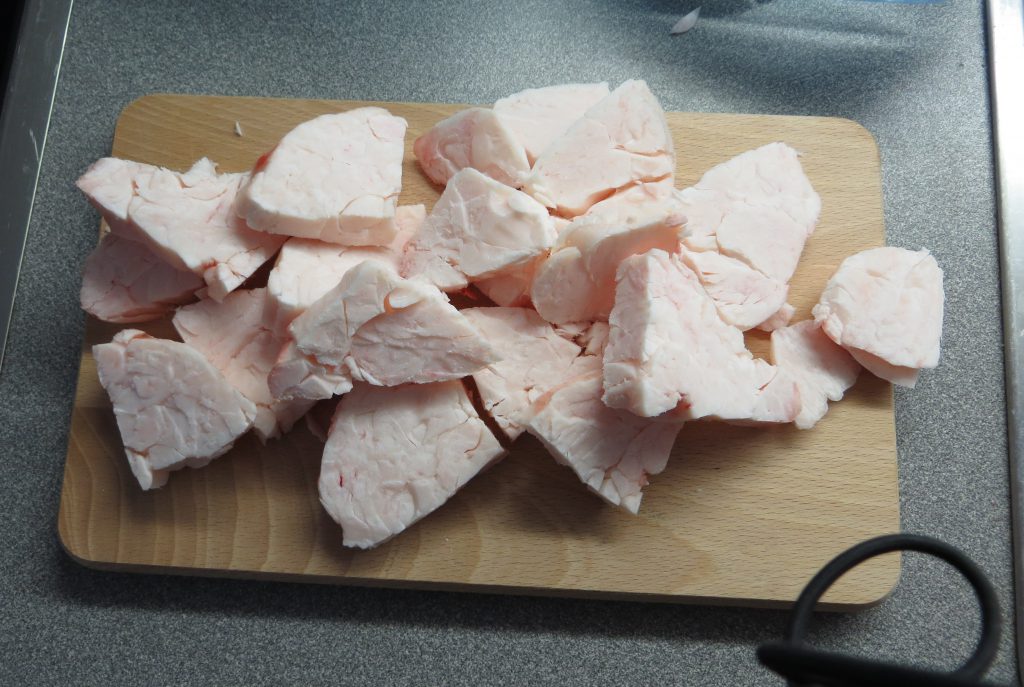Do you know your Tallow from your Suet? These traditional cooking and naturally nutrient dense dietary fats are making a welcome comeback.
Modern, high fat, low carb, low inflammatory diets like the Carnivore Diet, Paleo, AIP and Ketogenic Diets have turned this beef fat into a shining star but there is still quite a bit of confusion out there on the difference between Suet and Tallow. In this article we explain:
Beef Suet is the hard fatty part of the cow that surrounds the kidneys and around the loins of the carcass. Beef Suet has a white appearance, slightly crumbly, and almost dry to the touch. Suet has a melting point of between 113 °F (45 °C) and 122 °F (50 °C).
The high smoke point of Suet makes it the perfect beef fat for stable frying and was a traditional way of making calorie-dense pastries, puddings, and pies.
Tallow is the rendered or melted down version of suet. Tallow is simple to make at home DIY and gives you a clean, healthy animal fat that you can cook with, baste with, sauté, deep fry, or even spread like butter. Just a couple of generations ago and before the modern obesity and diabetes pandemic, beef tallow (rendered suet) was what people used to cook with as their main cooking oil.
Not only does Beef Tallow have a very high smoke point and a long shelf life at room temperature, but it’s also a way to ensure we’re using the whole animal in our cooking ~ a practice our forefathers understood the value of and that we’re re-learning how to do today with nose to tail eating.
Tallow can be used as a substitute for suet in certain recipes, especially if the recipe needs melted or rendered suet. However, tallow has a different texture and composition, so the final result may vary.

HOW TO COOK WITH SUET AND WAYS TO USE BEEF TALLOW TODAY.
- Cut up and flash fried on the pan, Suet is now an extremely popular way to boost fat intake by adding a few ounces of daily energy rich, healthy grass-fed suet to a ketogenic / no carb diet regime.
- As a crispy zero carb snack. When you flash fry Suet on high heat quickly, you will get crisply pieces of fat bombs called ‘Suet Crackling’ which is very similar crispiness to Pork Belly skin except for beefy flavor notes. Just add salt for a crispy Beef Suet snack or add to a carnivore diet meal.
- Eat Suet raw. Some carnivore customers prefer to eat their suet raw. Our only advice is to make sure it is a clean toxin free source of Suet that comes from Organic Grass-fed cattle. Keep in freezer and use as needed.
- Rendered down Suet to make homemade Tallow for cooking and frying. A pure beef fat alternative to heavily processed plant-based oils.
- Fry steaks and meats in the pan with homemade tallow. Cooking steaks with Suet or Tallow just works in terms of flavor, added vitamins A,D,E and K plus it has a very high smoke point. Wether you are looking to cook a New York Strip or Sirloin Steak, using some Tallow or even a piece of suet on the pan adds great depth to the flavor.
- Sautee or stir-fry veggies using tallow as a healthy animal-based oil for a delicious meaty undertone.
- Brush and baste tallow on spuds to make superb and crispy roast potatoes for Thanksgiving.
SUET AND BIRD FEEDERS? ~ YOUR FRIEND IN THE GARDEN.
At TruBeef, we are all for biodiversity no matter where you live and here is a great Suet Tip to bring some new life to your urban or rural garden: Beef Suet attracts insect-eating birds live as woodpeckers, wrens, chickadees, nuthatches, and titmice into your garden if you have a Suet bird feeder / fat cake feeder.
Gardeners have known for generations how these birds LOVE SUET so its a great way to attract these helpful feathered friends into your garden for more diversity, natural sounds of nature and let them do their job as Mother Natures natural insect control.
What is Tallow and How is it Different from Suet?
FAQ
Can tallow be used for suet?
What is the difference between beef tallow and beef suet?
What is the best substitute for suet?
What does beef tallow replace?
Can you substitute beef tallow for suet?
However, suet can be made from beef and lamb. If you would like to substitute beef tallow with suet, you should know that the two are very similar. They are both hard fats with a high melting point. Because of its bland taste, suet is typically used when frying items to avoid making them overly sweet or salty.
What are the best substitute for shallot?
The best substitute for a shallot would be something with a similar taste and cooking properties. The first thing that comes to mind is a red onion, although this might have a stronger flavour than a shallot, it might be the closest you can get. Other options would be any other type of onion, either white, sweet, or yellow.
Is beef tallow the same as suet?
While similar, beef tallow and suet are not the same thing. Tallow is often made from suet, but suet is a hard, crumbly fat taken from the kidney area of a sheep or cattle. Suet isn’t as shelf-stable as tallow and is popular in baking due to its melting properties and resulting texture.
Is tallow better than suet?
In terms of health, tallow is a better choice than suet. Tallow is a healthier fat, with a higher proportion of unsaturated fat and a lower concentration of saturated fat. Additionally, tallow is a more neutral-tasting fat, which makes it a good choice for cooking. Suet is a stronger-tasting fat, and it can give food a greasy taste.
